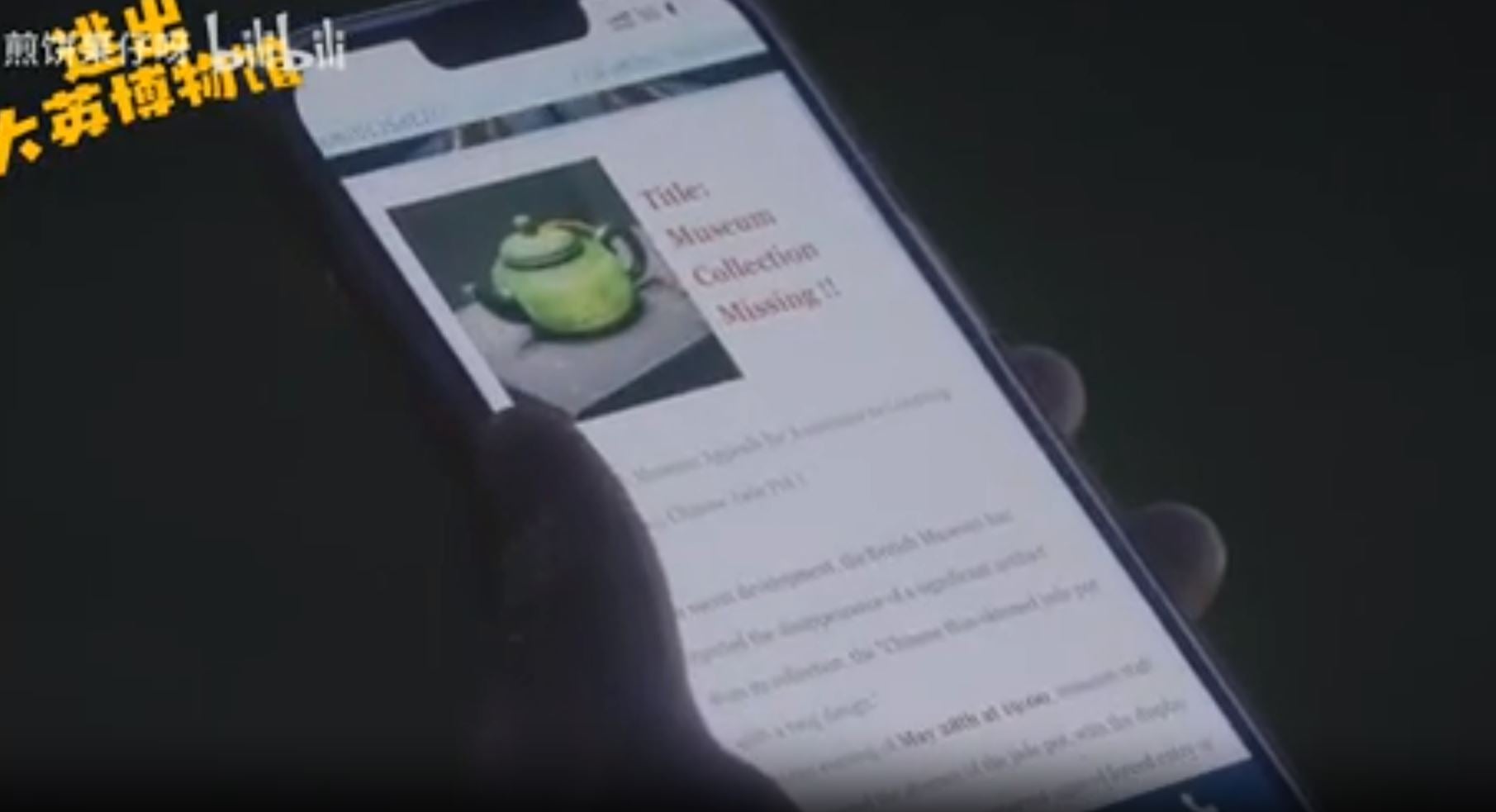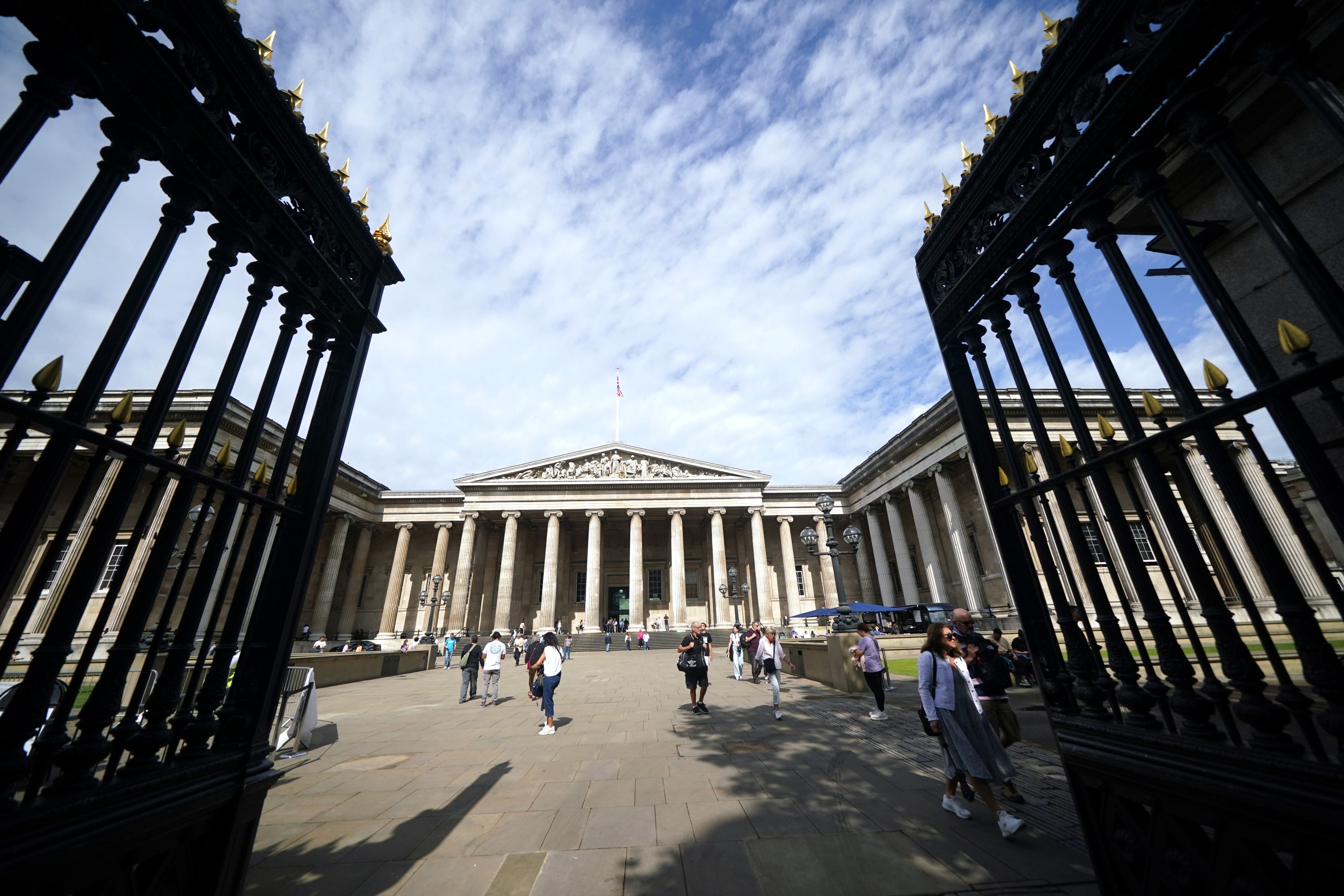Why ‘Chinese TikTok’ hit is fuelling calls for British Museum to return artefacts
The video has sparked calls for the return of Chinese artefacts showcased in the British Museum, where former chancellor George Osborne sits as chair of the board of trustees
Your support helps us to tell the story
From reproductive rights to climate change to Big Tech, The Independent is on the ground when the story is developing. Whether it's investigating the financials of Elon Musk's pro-Trump PAC or producing our latest documentary, 'The A Word', which shines a light on the American women fighting for reproductive rights, we know how important it is to parse out the facts from the messaging.
At such a critical moment in US history, we need reporters on the ground. Your donation allows us to keep sending journalists to speak to both sides of the story.
The Independent is trusted by Americans across the entire political spectrum. And unlike many other quality news outlets, we choose not to lock Americans out of our reporting and analysis with paywalls. We believe quality journalism should be available to everyone, paid for by those who can afford it.
Your support makes all the difference.A bizarre viral video about a Chinese teapot trying to escape from the British Museum has revitalised a row between the two countries about the return of historical artefacts.
The three-part series, entitled “Escape from the British Museum”, has already been viewed more than 310 million times since its release at the end of August on China’s version of TikTok, Douyin.
The success of the series has sparked calls for the return of Chinese artefacts showcased in the British Museum, where former UK chancellor George Osborne sits as chair of the board of trustees.

As chancellor Mr Osborne pushed for closer ties between Britain and China, calling on a visit to Shanghai in 2015 for the founding of a “golden decade for the UK-China relationship”.
Mr Osborne had said: “Let’s stick together to grow our economies. Let’s stick together to make Britain China’s best partner in the West. Let’s stick together and create a golden decade for both of our countries. Britain and China: we’ll stick together.”
Despite this, China’s government and state-run media have continued to call for the return of precious artefacts, effectively thumbing its nose at his remarks.
In the series, the teapot turns into a woman before encountering a Chinese journalist on the bustling streets of London, who lends a helping hand in her quest for freedom.
The success of the series has been such that its creators, who claim to be independent filmmakers with no links to the government, have gained over five million new followers in a week.

The British Museum boasts the largest collection of Chinese artefacts anywhere in the Western world, totalling around 23,000 objects according to the museum website, that span from the Neolithic age to contemporary times.
Last month, the leading Chinese state-run newspaper The Global Times called for the British Museum to repatriate what it considers to be “stolen” artefacts in an editorial released on the eve of the UK foreign secretary’s visit to China.
The editorial was published just ahead of James Cleverly’s scheduled arrival in Beijing – the first visit by a British foreign secretary to China in five years.
The Global Times called on the British Museum to return all Chinese cultural relics “acquired through improper channels to China free of charge”.

The newspaper referred to Britain’s refusal “over the years” to return artefacts to other countries and accused the museum of “adopting a resistant, protracted and perfunctory attitude”.
“Escape from the British Museum” has also been endorsed by Chinese state media, with broadcaster CCTV commenting: “We are very pleased to see Chinese young people are passionate about history and tradition… We are also looking forward to the early return of Chinese artefacts that have been displaced overseas.”
Earlier this year, during the Chinese Lunar New Year, a video featuring a Chinese influencer visiting the British Museum gained widespread attention on Douyin.
In the video, the influencer humorously remarked that the treasures in the museum must be feeling “homesick”. A comment proposing the idea of turning the escape of these treasures into an animated series reportedly served as the inspiration for the creation of the series.
Having seen the popularity of the series, other social media influencers have started creating similar content for their pages by donning attire resembling characters from ancient Chinese paintings and sculptures.
“Maybe the Chinese cultural relics in the British Museum are also missing home right now,” read one of the top comments on the series on Douyin, according to the BBC.

“But they can only be squeezed into the crowded booths. Will they be thinking ‘Bring me home’ when they see Chinese faces there?”
Another user from another Chinese social media app, Weibo, wrote about the viral series: “Eventually, there will be a day when [the items] come home in a dignified way.”
The clamour to get Chinese artefacts back to the country also grew after it was reported last month that approximately 2,000 treasures were believed to have been stolen from the British Museum. The museum’s director Hartwig Fischer stepped down from his position with immediate effect in the wake of the scandal.
The jade teapot itself was only made in 2011. The museum says it bought the delicate jadeware direct from the artist who made it, Yu Ting.
In China, the hashtag “The British Museum please return Chinese antiquities” dominated Weibo’s search rankings, garnering over half a billion views in under a day.
Sudan, Nigeria, Greece and Egypt have all made requests to the British Museum for the return of artefacts they believe were wrongfully acquired or removed from their respective countries.




Join our commenting forum
Join thought-provoking conversations, follow other Independent readers and see their replies
Comments